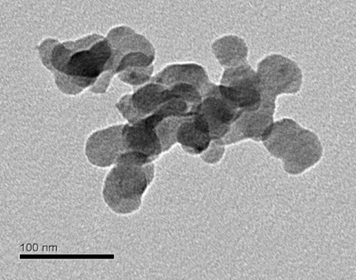
Context
Soot particles are generated by combustion systems when this combustion is incomplete (industries, transports, fires). It corresponds to nanoparticles having a complex morphology (fractal) and for which the composition and radiative properties are variable and poorly known. These particles have an impact on human health and climate change. Concerns about the effects of soot released into the environment have led to the implementation of increasingly strict emission regulations, even though the mechanisms involved in their impact on health or global warming are not yet fully understood.
In addition, because of their important contribution in thermal processes using their high radiant power, emissions of soot particles must be controlled. Therefore, detailed characterisation of soot in flames or once emitted into the atmosphere is crucial, especially for the validation of accurate models of soot production (size, volume fraction, morphology, composition) for their integration in CFD codes.
Measurement techniques developed at CORIA for the characterization of soot particles.
CORIA develops different measurement techniques for the determination of size, shape, composition, concentration (number or volume) of soot particles. Among these developments we find :
- The angular ans spectral light scattering measurement (size and shape),
- Abel deconvolution of light scattering or thermal emission with trapping consideration : PySAT-Abel
- Spectral extinction / turbidimetry (optical properties),
- Laser-induced incandescence (volume fraction, diameter of primary spehrules).
These techniques are used in flames but also for particles dispersed in the aerosol phase (e.g. for the study of their atmospheric ageing).
In addition to the development of optical techniques, CORIA has an expertise in more conventional measurement of nanoparticle aerosols:
- SMPS granulometry, CPMA mass selection, AAC selection by aerodynamic diameter.
- Dilution at high temperatures (e-diluteur Pro).
- Analysis of electron microscopy images (EDM-SBS),
- Analysis of effective density measurements,
- This platform is largely financed by the Normandy region.


The applications
These metrological developments are implemented in different projects in order to respond to different issues:
- Understanding the particle formation mechanisms (improvement of models),
- Reducing emissions (automotive, aeronautics),
- Determining the radiative properties (climatic impact, improved optical diagnostics),
- determining their toxicological impacts (see illustration presenting the lung cell exposure bench for soot particles: Pufbio project funded by ANSES).
Ongoing PhD on these subjects : Maxime Bouvier, Ana Teresa Juarez Facio, Maxime Joret.
Associated projects : SOPRANO (EU), mobility France-Chile joint program receiving a research grant provided by Ecos/ANID C19E01, Pufbio (ANSES), Solonino (Regional project).





